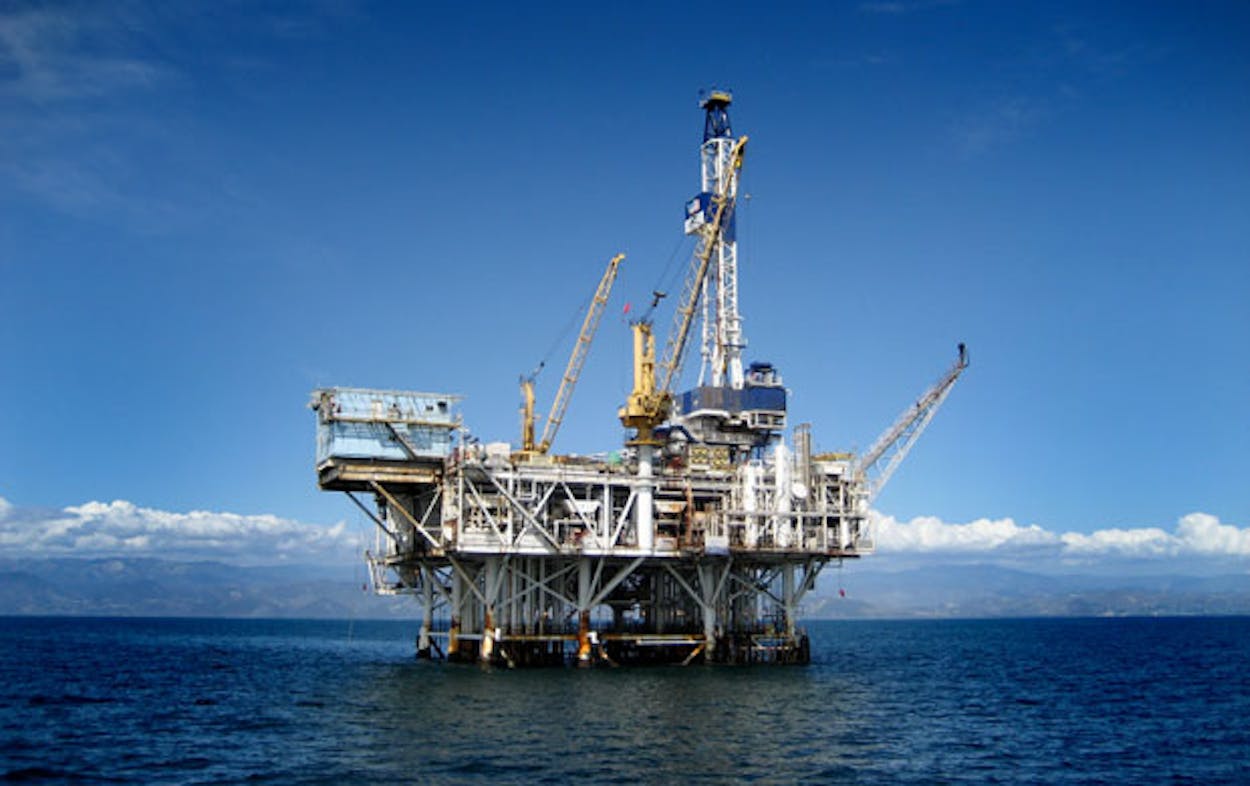Are dormant oil rigs in the Gulf of Mexico hulking, rusty relics that should be removed or valuable havens for marine life that should be preserved ?
Melissa Gaskill grappled with this question in the pages of the New York Times in a story about High Island 389-A, a thirty-year-old rig some 100 miles of the coast of Galveston, which is among 650 decommissioned drilling platforms slated for demolition.
“These structures attract marine life that normally wouldn’t use the area,” said Greg Stuntz, chairman of ocean and fisheries health at the Harte Research Institute for Gulf of Mexico Studies at Texas A&M University Corpus Christi. “Much is growing on them, from corals up to marine mammals.”
The High Island rig has created two or three acres of reef habitat, Gaskill wrote, and some estimate that the blasts required to demolish the platform could kill thousands of fish, as well as coral and other marine life anchored to the platform.
Many are unhappy about what could be lost along with these rigs, and the fight to stop the rig’s removal is bringing together strange bedfellows—oil companies and environmental groups. As Gaskill writes:
[C]ampaigns to save them are under way. The Gulf of Mexico Fishery Management Council — which oversees fishery resources in the Gulf’s exclusive economic zone, an area 9 to 200 miles off the Texas coast where the federal government has jurisdiction over resources and economic matters — is seeking recognition of offshore platforms as essential fish habitat. That designation could bring into play the Sustainable Fisheries Act, which prohibits removal of protected corals from federal waters. Gov. Rick Perry and a Texas congressman, Blake Farenthold, have asked the Interior Department to re-evaluate the removal rules, as has a coalition of seven recreational angling organizations, including the Coastal Conservation Association. The coalition is supporting legislation to require more thorough review of platform removal.
John Hoffman, chief executive of Black Elk Energy, an oil and gas company based in Houston, has founded a nonprofit organization, Save the Blue, that would help insure and maintain platforms that are spared removal.
The Interior Department is concerned that, if left in place, spills could emanate from these old oil rigs or storms could knock them down.
The High Island 389-A, located in the Flower Garden Banks National Marine Sanctuary, could be converted into an “artificial reef” through the federal Rigs to Reefs program by partially removing the structure “down to 85 feet below the water surface.”







